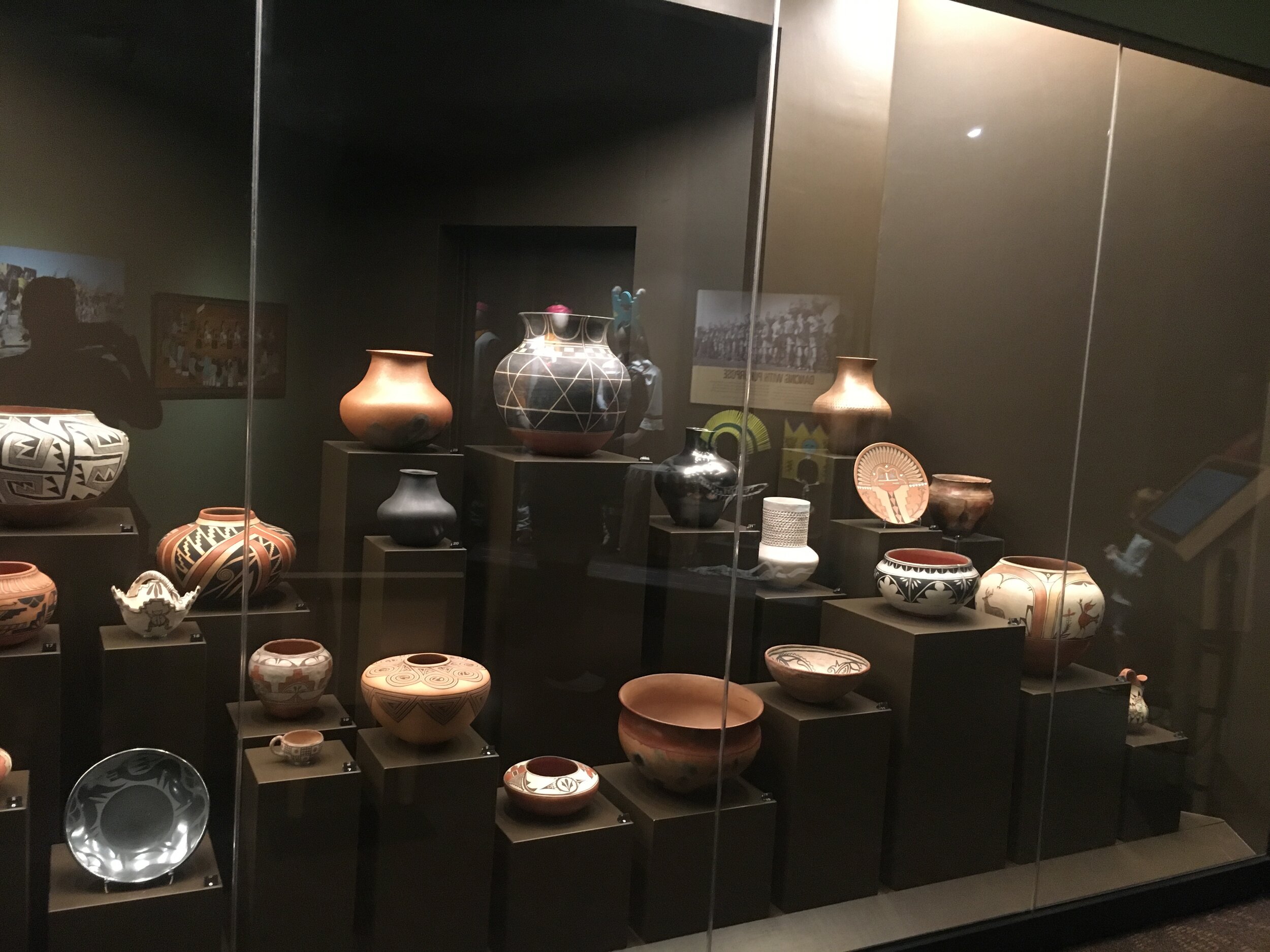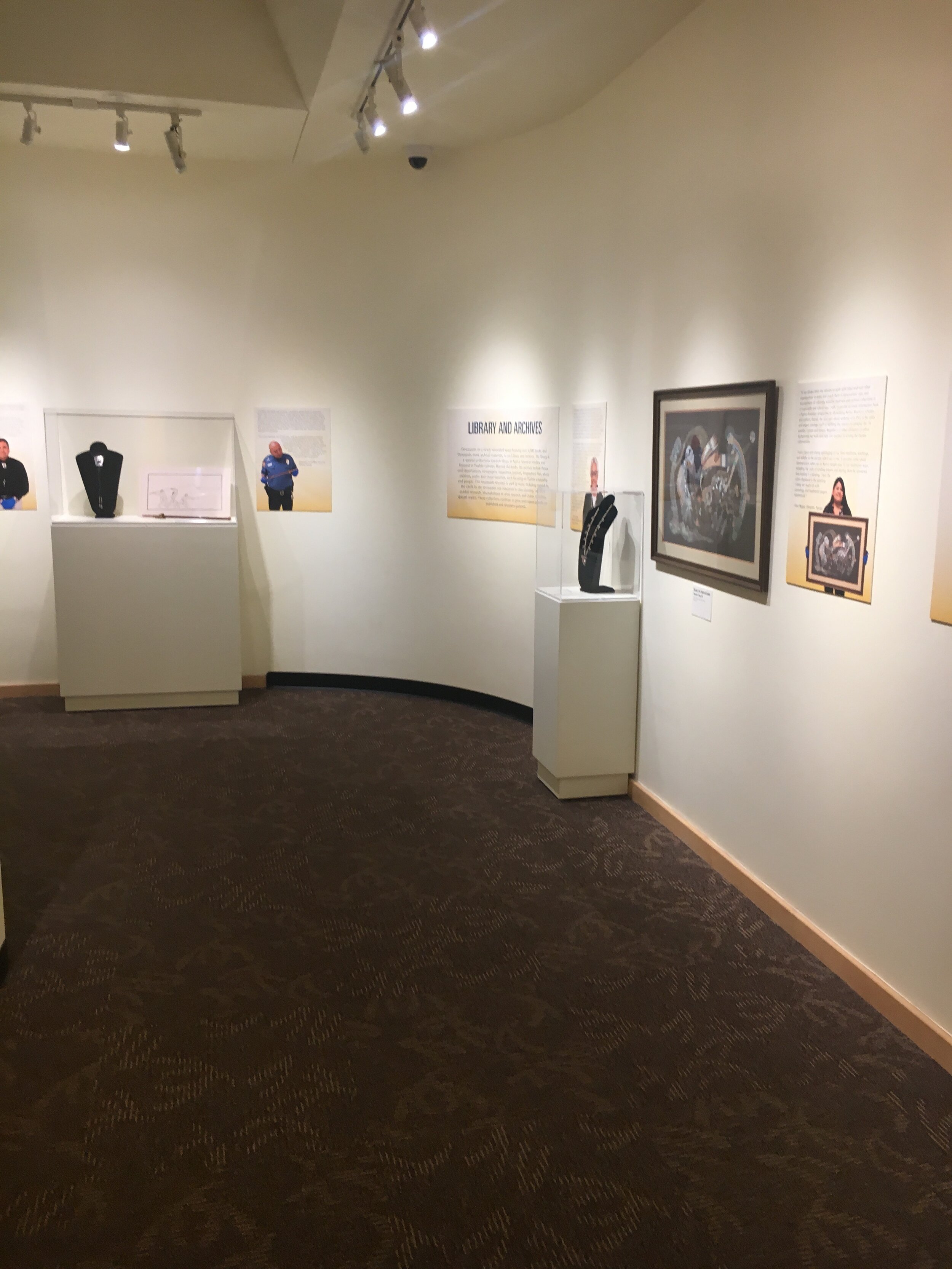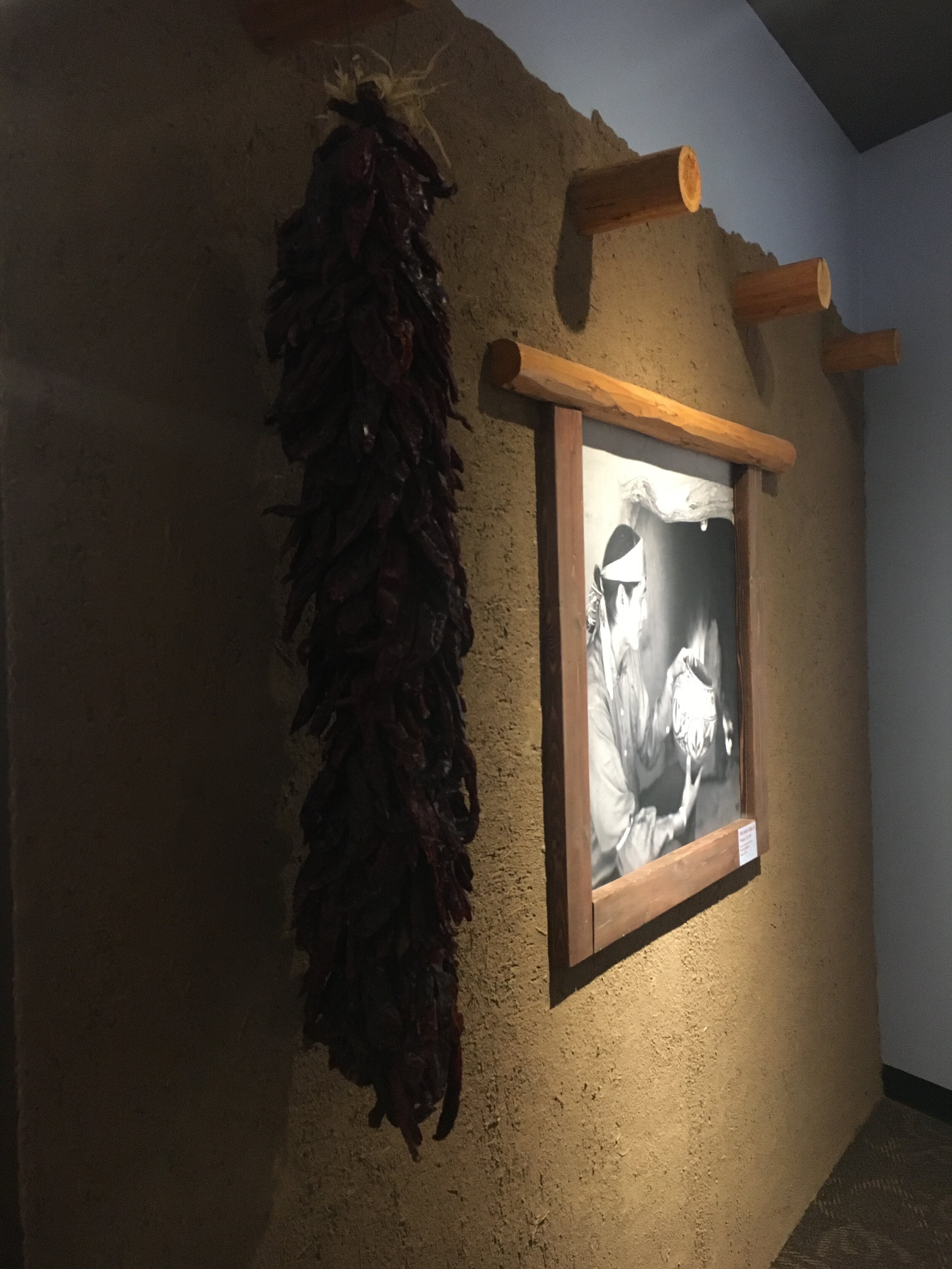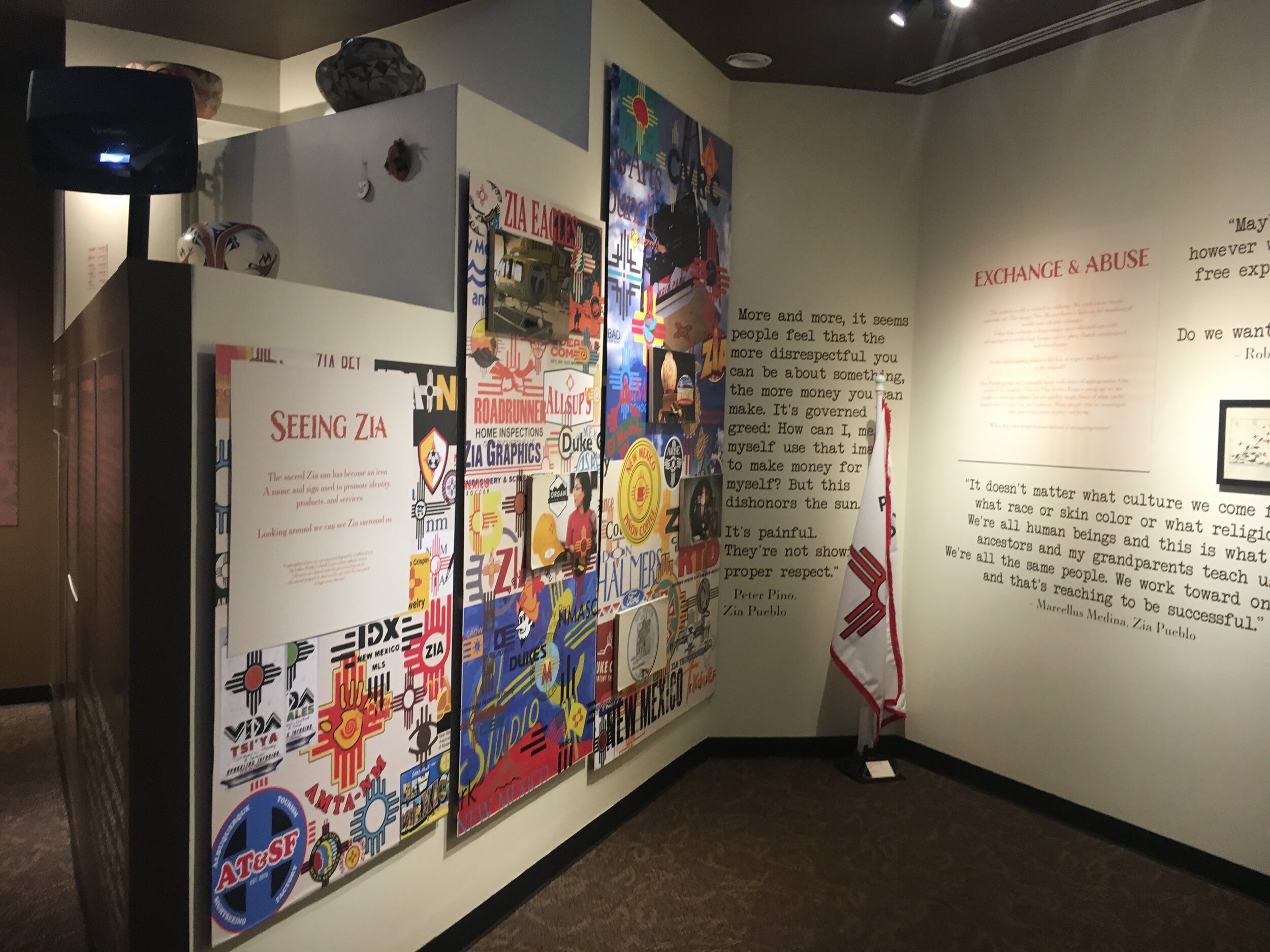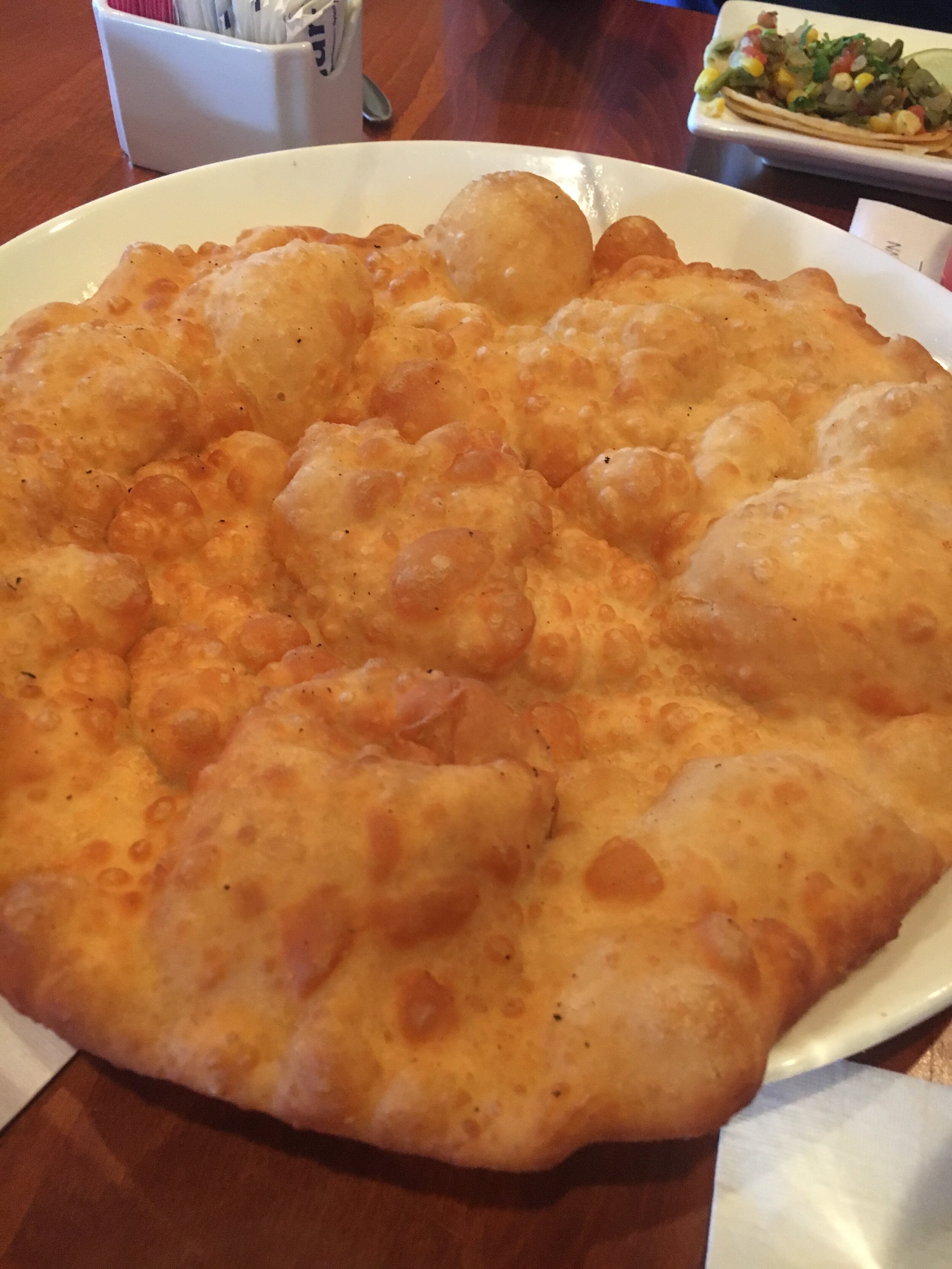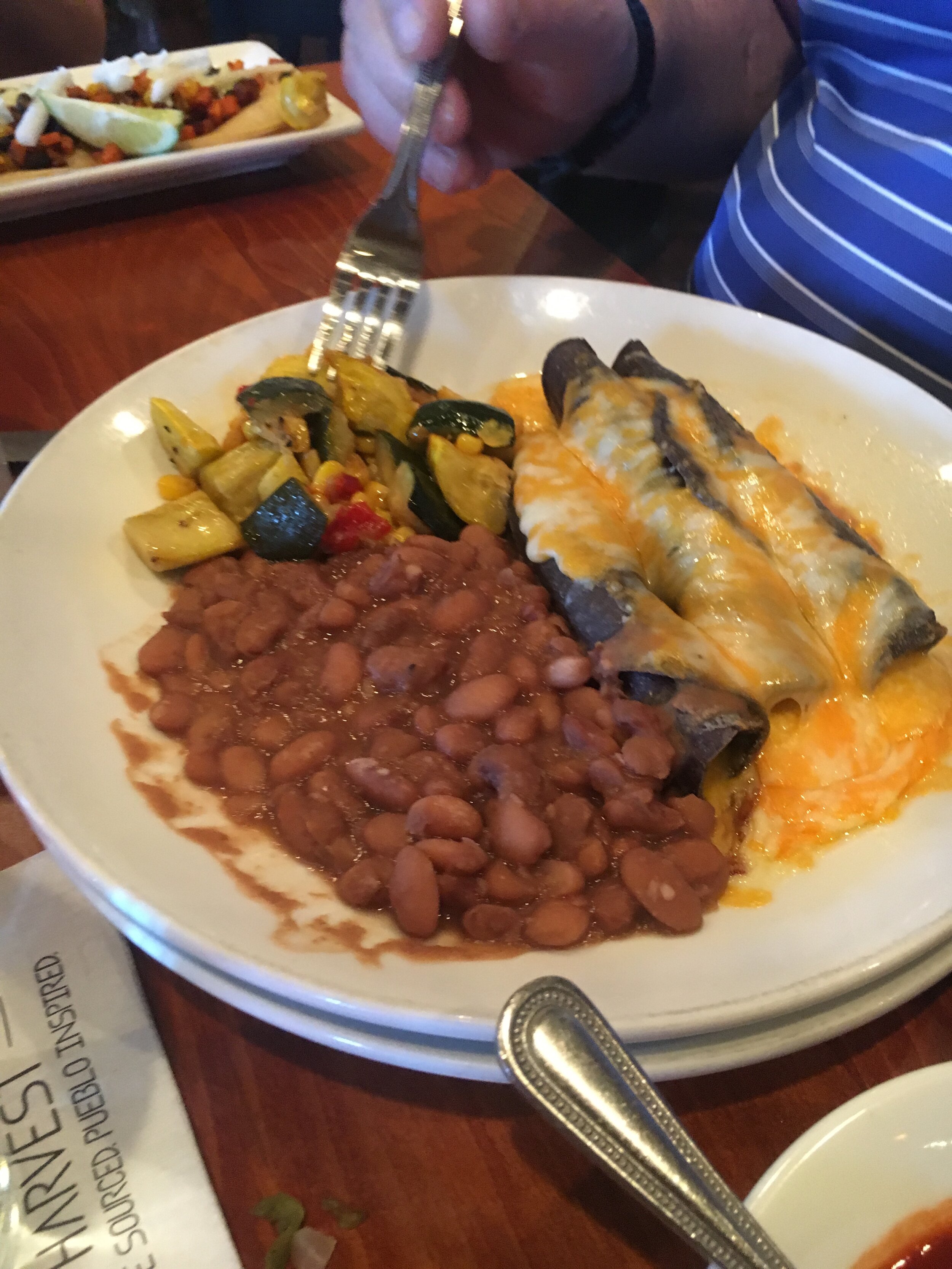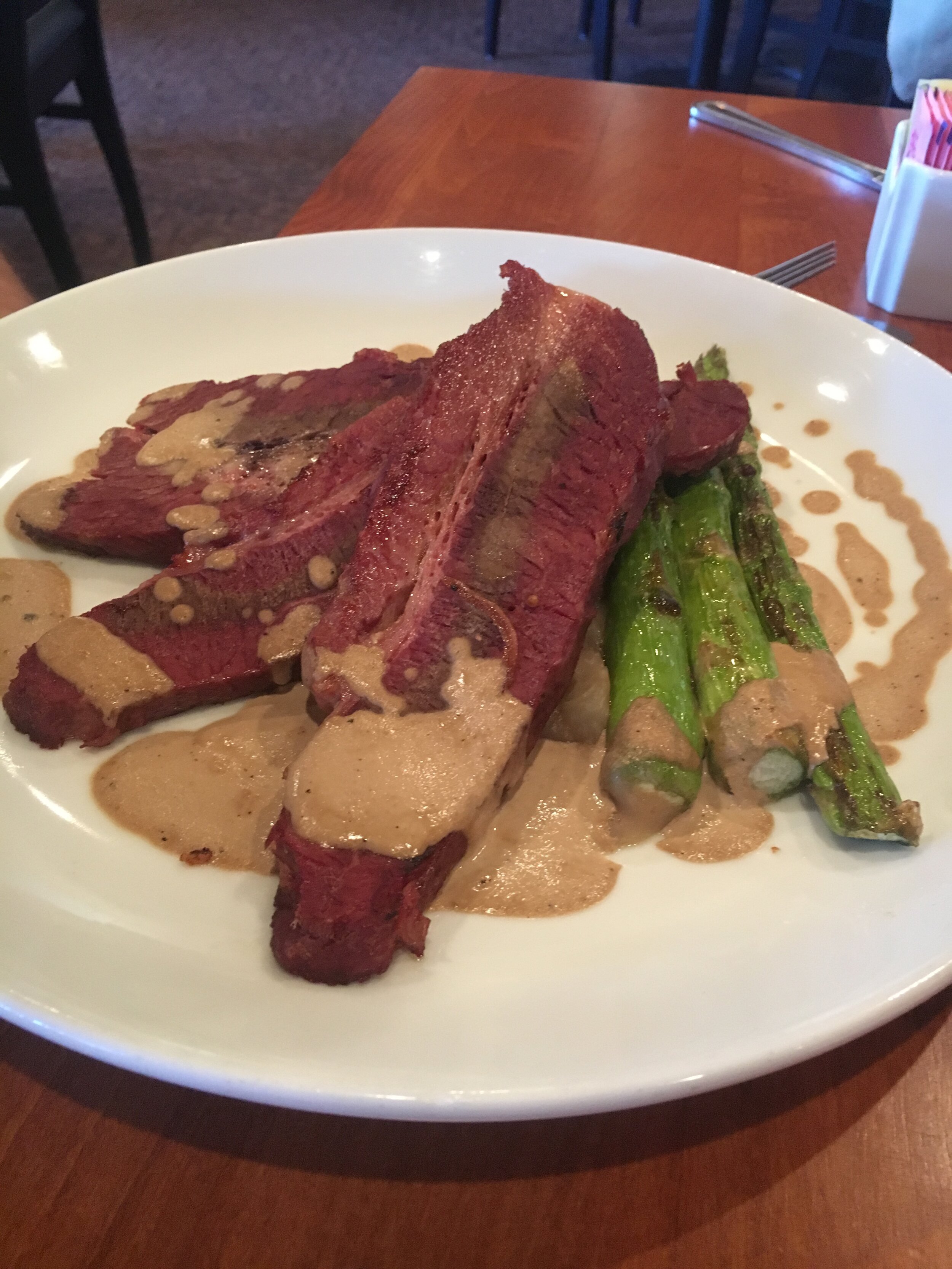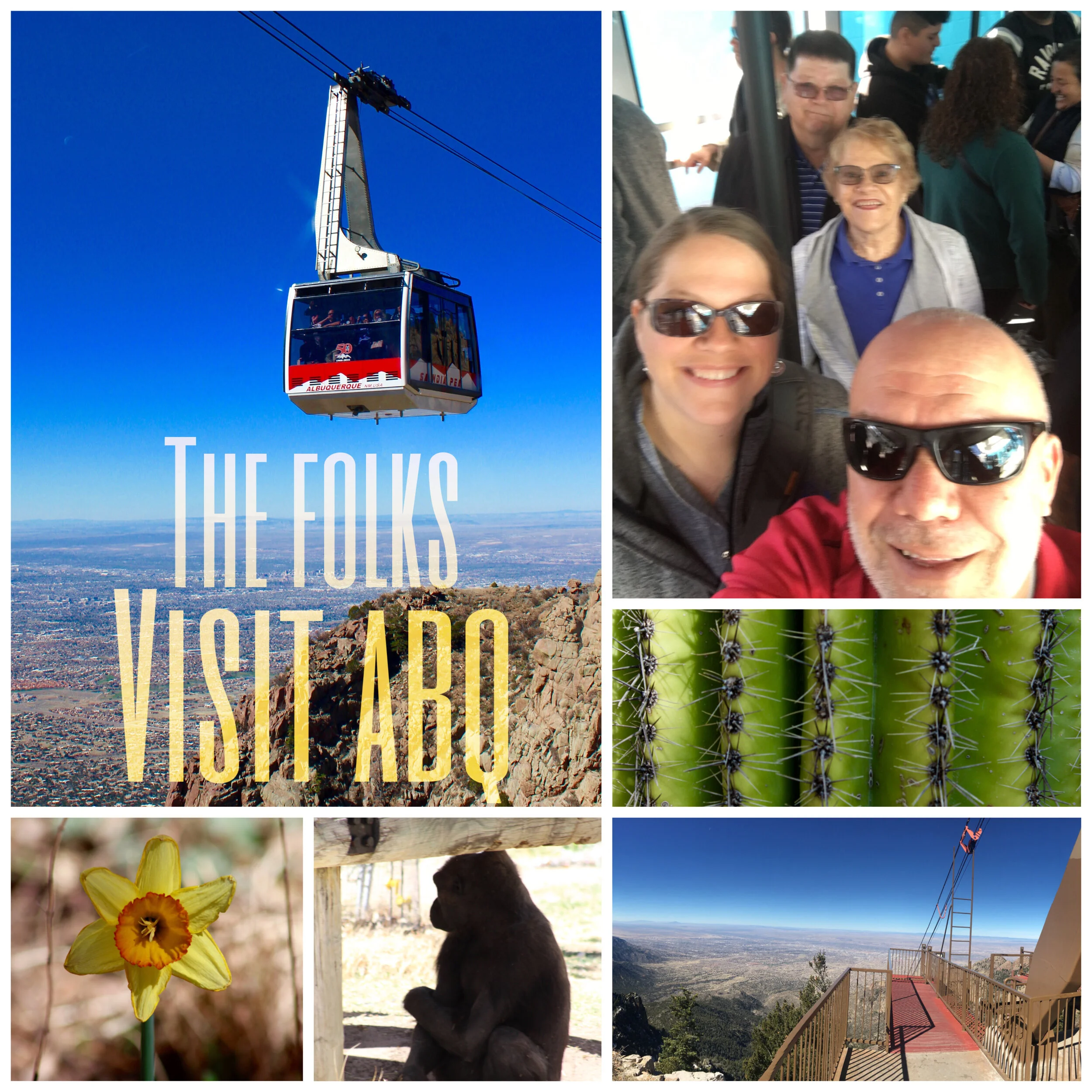Pueblo Culture and Feast
March 28, 2019: We landed in Albuquerque due to our workamping job for the winter/spring season being located there. Being that we were working for a tax company and it was April, we were trying to pack us much sightseeing with my parents visiting from Ohio as possible during our couple of days off. So that’s exactly what we did . . .
While we had been high in the sky on the Sandia Peak Tramway in the morning, we still were looking for that caffeine high and stopped out one of our favorite ABQ coffee spots - Cutbow Coffee for some good strong brew before rushing on to our next stop, the Indian Pueblo Cultural Center. With a large Native American population in Albuquerque and the state of New Mexico, Russ and I were really looking forward to checking out the cultural center and knew it would be right up my Mom & Dad’s alley as well. Situated outside of Old Town, the center which opened in 1976 is a beautiful facility that is inspired by traditional Pueblo structures with a central courtyard that serves as gathering place. We found the center to be very comprehensive and well-organized and is owned and operated by the 19 Pueblos of New Mexico.
A Pueblo is a tribal nation, meaning it is a body of land that is governed by their own tribal leaders and made up of people who are related and have similar beliefs, faith and lives. There are a total of 23 tribes in the state of New Mexico, with 19 being called pueblos, 3 Apache tribes, and the Navajo Nation. We had the pleasure of working with many Native Americans by preparing their taxes and had become familiar with the names of some of the pueblos and tribes, such as Isleta, Zuni, Jemez, Laguna but learned also about ones we had never heard of such as Okhay Owing and Pojoaque. The populations of the pueblos vary with the largest in New Mexico being the Zuni tribe with about 10,000 people and several smaller ones have 300 enrolled members. These pail in comparison to the Navajo Nation which is the largest Indian tribe in the United States with about 36% of the 298,000 Navajos living in New Mexico.
These individual sovereign nations established dwellings and trading centers like those you may already know about like Mesa Verde in southwestern Colorado and Chaco Canyon in northwestern New Mexico. Mom & Dad - I know I rolled my eyes as a teenager for having to go to Mesa Verde, but apparently I did learn something as I remember it vividly. So thank you for that and all the other educational spots where we vacationed. I do appreciate it and often seek them out on my own now, maybe even a return trip to the Petrified Forest!
Okay, but back to our visit to the cultural center, the exhibits were curated well with a combination of historic and contemporary pieces to preserve, as well as, perpetuate the culture of the Native American people. Lots of pottery, jewelry, textile and baskets were presented as well as vibrant murals all which helped vividly convey the important parts of the Pueblo people, including harvest, dance and animals.
Their were two exhibits we especially enjoyed, with one being the first one we entered which was called “Selections from the Indian Pueblo Cultural Center Family.” It was here that each piece was selected by a member of the cultural center. I appreciated being able to see a face behind the handpicked item with why it was their favorite and how they were a part of making the cultural center what it was from the big wigs to the chef to the janitor of the cultural center.
The other exhibition that stayed with me over the months that have passed is the Zia Sun which we had grown accustomed to seeing on so many things throughout New Mexico, including on the state flag. The Zia pueblo are very well known due to their sun symbol. The insignia has been adopted as an emblem of friendship among cultures, which is one of the things we loved most about Albuquerque, its’ vast diversity. The use of this symbol wasn’t always rainbows and sunshine, as it was first stolen from the Zia people by an anthropologist who had built rapport with this Zia people and was allowed to attend their sacred ceremonies. When the Zia people wouldn’t allow him to purchase a piece of pottery with the sun symbol, he took it and documented his theft in a book he later published. Subsequently, the piece of pottery has been returned and the Zia have allowed use of their symbol as long as it is used respectfully and with their consent. For example, you will never find the symbol on a football helmet or beer can at their request. Thankfully they allowed its use on the flag, because during the first 14 years of statehood, New Mexico did not have an official flag.
The sun symbol depicts a circle with lines emerging at the four cardinal directions and that is just about the only thing we knew about the symbol until we navigated this exhibit. The number four is sacred to the Zia and the lines which ray from the circle of life represent the:
FOUR Periods of Each Day (Dawn, Daylight, Dusk & Dark)
FOUR Seasons of the Year (Spring, Summer, Fall & Winter)
FOUR Cardinal Directions (North, East, South & West)
FOUR Seasons of Life (Infancy, Youth, Adulthood & Old Age)
The Zia also believe humans have FOUR sacred obligations and must develop: a clear mind, a pure spirit, a devotion to the welfare of people and a strong body. And for anyone who may have been a part of 4-H (like youthful me was), it was noted by another travel blogger that these seem to parallel the 4-H pledge and four H’s which are head, heart, hands and health. It is our hope that as this symbol which holds such great importance to the Pueblo people, be always used in dignity and respect as it becomes more of a commodity to the state of New Mexico.
Despite having already thoroughly enjoyed the Indian Pueblo Cultural Center, we couldn’t call it quits before a visit to their well-known and top-rated restaurant Pueblo Harvest. After all, this is likely how I first discovered the cultural center after stumbling across a search for delicious food in Albuquerque. Come on, I know we can’t be the only people who look for good food when landing in a new city! Pueblo Harvest blends the traditional Pueblo-inspired cuisines with contemporary flavors while sourcing as many ingredients as possible from the Pueblos of New Mexico and tribal communities in the United States. It was a non-negotiable that we were going to dine here and lucky for Russ most of the menu was gluten free. All four of us throughly enjoyed our meals, starting with the fry bread (YUM) and continuing with entrees.
After spending awhile just now perusing their menu, it looks like it has changed as I don’t spot our exact menu items. Looks like we will have to go back and try something else. Darn, you will have to twist my arm. We highly recommend a visit to the Indian Pueblo Cultural Center and while we’re at it, might we also recommend planing your visit around a meal time as well. You won’t be disappointed.
You definitely get a lot of bang for your buck at this museum with admission being $8.50/person with discounted rates for seniors, children, military, New Mexico residents, etc. As we learned at the Indian Pueblo Cultural Center, most Pueblo languages don’t have a word for goodbye. Just like the Zia sign, they believe life is cyclical and believe we will all meet again whether it be in the near future or a long time off. So before leaving the museum, we were given this parting greeting of until we meet again, so we will leave you with that same sentiment and look forward to chatting again soon.




